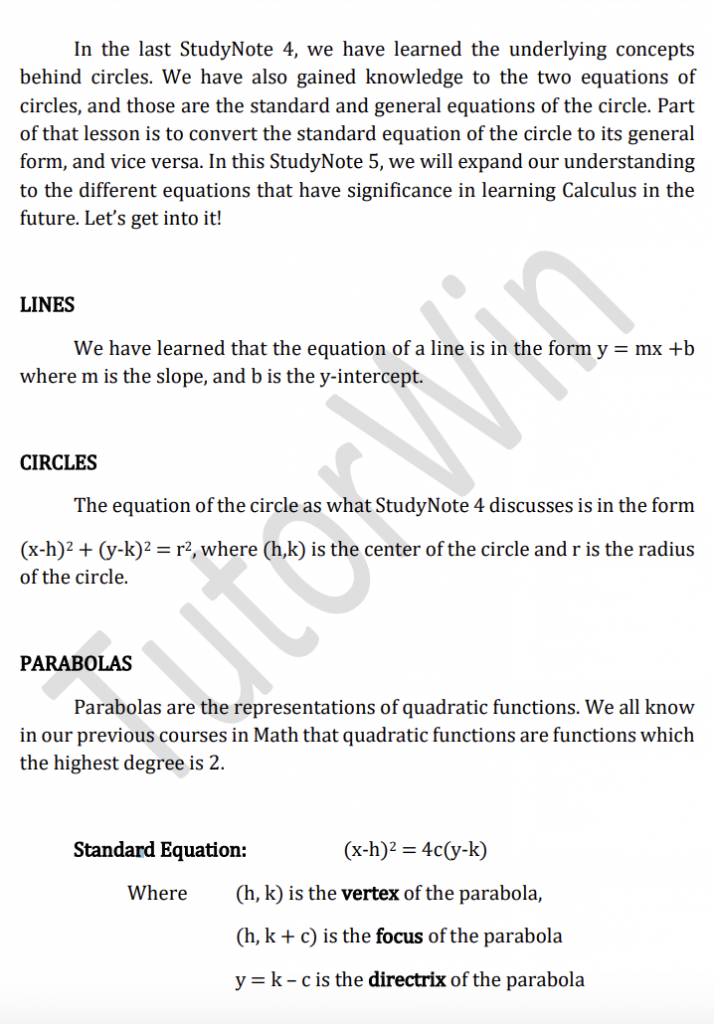Equations and Graphs in Differential Calculus
Summary:
This Equations and Graphs in Differential Calculus study note focuses on equations and graphs related to various mathematical concepts. It covers circles, parabolas, ellipses, and hyperbolas.
Circles:
- Circle equation: (x-h)² + (y-k)² = r², where (h,k) is the centre and r is the radius.
- Conversion between standard and general equations.
- Vertex, focus, directrix, and axis of symmetry of a circle.
Parabolas:
- Parabola equation: (x-h)² = 4c(y-k) or (y-k)² = 4c(x-h), where (h,k) is the vertex and c affects the orientation.
- Finding vertex, focus, directrix, and axis of symmetry.
- Graphing parabolas.
Ellipses:
- Ellipse equation: (x-h)²/a² + (y-k)²/b² = 1 or (y-k)²/a² + (x-h)²/b² = 1.
- Centre, major and minor axes, vertices, co-vertices, foci, and their calculations.
- Graphing ellipses.
Hyperbolas:
- Hyperbola equation: (x-h)²/a² – (y-k)²/b² = 1 or (y-k)²/a² – (x-h)²/b² = 1.
- Centre, transverse and conjugate axes, vertices, co-vertices, foci, and asymptotes.
- Graphing hyperbolas.
The study note also provides practice problems for each concept.
Excerpt:
Equations and Graphs in Differential Calculus
DIFFERENTIAL CALCULUS
Study Notes 5
“EQUATIONS AND GRAPHS”
In the last StudyNote 4, we learned the underlying concepts behind circles. We have also gained knowledge of the two equations of circles, and those are the standard and general equations of the circle. Part of that lesson is to convert the standard equation of the circle to its general form and vice versa. In this StudyNote 5, we will expand our understanding of the different equations that have significance in learning Calculus in the future. Let’s get into it!
LINES
We have learned that the equation of a line is in the form y = mx +b, where m is the slope, and b is the y-intercept.
CIRCLES
The equation of the circle, as what StudyNote 4 discusses, is in the form (x-h)2 + (y-k)2 = r2, where (h,k) is the centre of the circle and r is the radius of the circle.
PARABOLAS
Parabolas are representations of quadratic functions. We all know from our previous courses in Math that quadratic functions are functions with the highest degree is 2.


Reviews